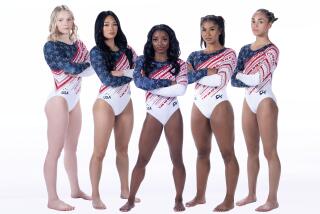On their mark ...
- Share via
Forget the one-legged track unitards, patriotic fingernails and body glitter of past Olympic Games. In Athens, athletes are making a more permanent fashion statement with tattoos.
The word “tattoo” comes from the Tahitian tatu, meaning “to mark something.” The purpose of tattooing varies, but it can signal membership in a club (think Hells Angels), rite of passage, status or an expression of style. It’s impossible to determine the origins of tattoos because they appeared in nearly all ancient cultures. “Body Art,” a 2000 exhibit at the American Museum of Natural History, included a painted Greek vase from the 5th century BC depicting tattooed Thracian women; tattoo stamps from Borneo, where designs were believed to protect people from evil; and photographs of tattoos on Maori and Polynesian men.
In modern Western society, tattooing has often been viewed as a countercultural practice, but is now more generally accepted (along with multiple piercings). At the Olympic Games, the five rings -- on forearms, ankles, backs, necks, arms and chests -- symbolize unity among the world’s elite athletes, whether they be from Great Britain, Brazil, the Netherlands, Canada, Argentina or the United States. It’s only fitting that they would choose to adorn their bare bodies, the temples to their achievements.
*
-- Booth Moore
More to Read
Go beyond the scoreboard
Get the latest on L.A.'s teams in the daily Sports Report newsletter.
You may occasionally receive promotional content from the Los Angeles Times.







